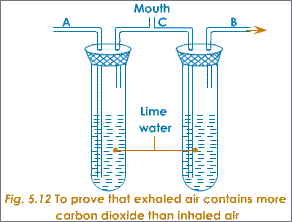1. Breathing the process of getting oxygen into the lungs and carbon dioxide out of the lungs
- Allows for gas exchange whereby oxygen is absorbed from an area of high concentration (alveoli in lungs) into an area of low concentration (red blood cells) and carbon dioxide is absorbed from an area of high concentration (blood plasma) into an area of low concentration (alveoli in lungs) by diffusion
- Pleural membranes and pleural fluid are slippery to reduce friction during breathing movements
How are alveoli adapted for gas exchange?
| Feature | Function |
| Thin (one cell thick) | Short diffusion distance |
| Large surface area | Large volumes of gas can diffuse at once |
| Moist | Keeps cells alive |
| Well ventilated (constant fresh supplies of air) | Maintains concentration gradients for oxygen and carbon dioxide |
| Close to a blood supply | Efficient transport of gases to/from cells |
2. Respiration the process of releasing energy through the breakdown of glucose in all living cells
| Aerobic respiration | Anaerobic respiration |
| Requires oxygen | Does not require oxygen |
| Glucose + oxygen -> carbon dioxide + water + energy C6H12O6 + 6O2 -> 6CO2 + 6H20 + 2900kJ/mol (kilojoules per mole of glucose) |
(In plants) Glucose -> carbon dioxide + ethanol + energy (In animals) Glucose -> lactic acid + energy |
| Produces a lot of energy | Does not produce a lot of energy |
| Involves mitochondria | Does not involve mitochondria |
Breathing and exercise
When we exercise…
- ↑rate of breathing
- ↑depth of breathing
- ↑heart rate
…to deliver more oxygen and glucose to the muscles faster and remove carbon dioxide
- Before, during and after exercise, an unfit person usually has a higher pulse rate than a fit person
- After exercise, a fit person recovers much faster than an unfit person
Respiratory diseases
| Chemical | What it is | Long term effect on the body |
| Nicotine | Highly addictive drug |
|
| Tar |
|
|
| Carbon monoxide |
|
|
| Irritants and toxic substances |
|
|


